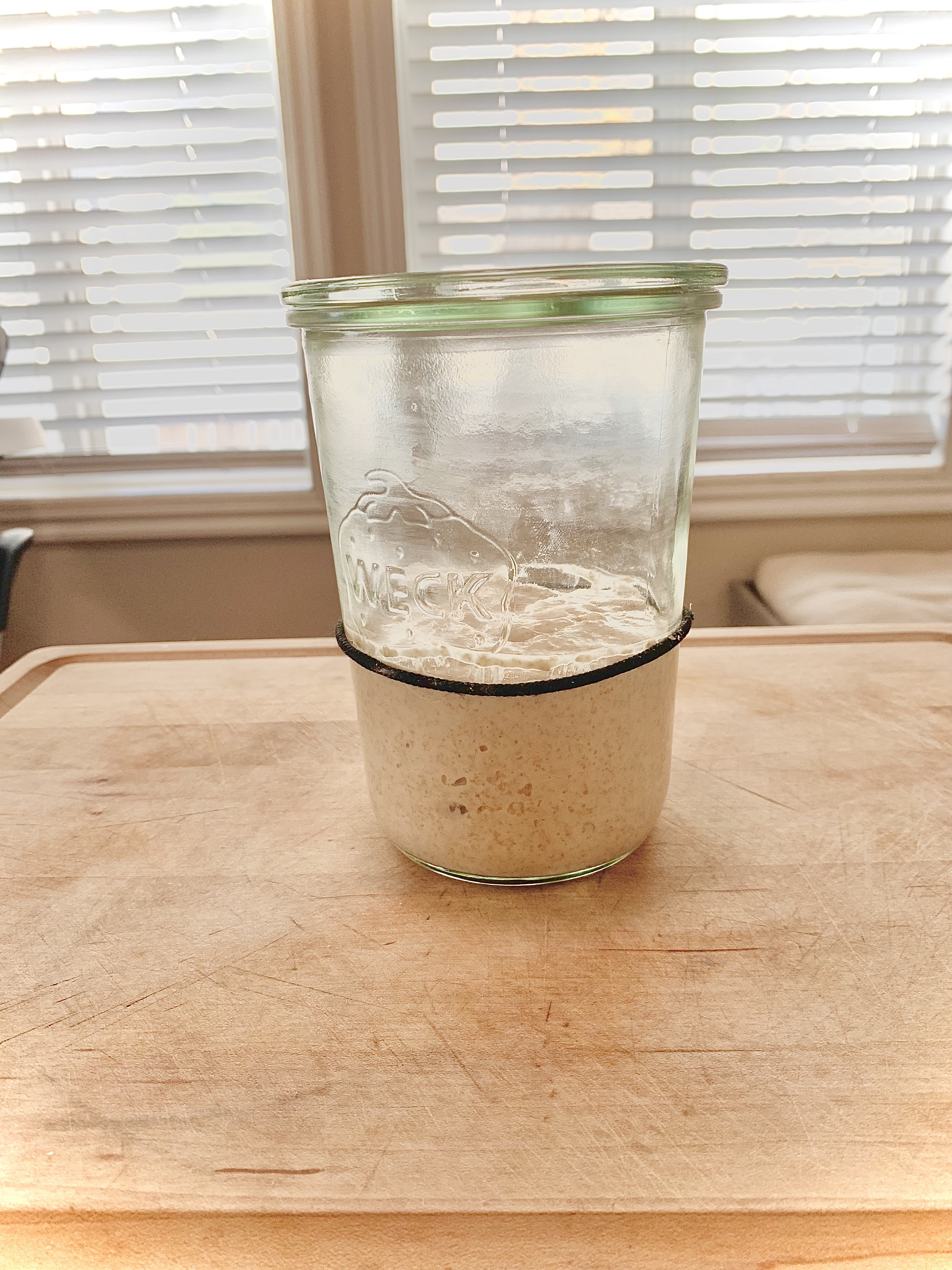Sourdough Starter
A few years ago my husband challenged me to learn how to make sourdough bread and of course I accepted. I started to research online and found that you have to make a starter first before you can even start making the bread. For me I love learning recipes that sometimes have a process. I know call me crazy, but I love the feeling of accomplishment when I get the recipes right and of course getting to enjoy the food with my family.
What I learned was that making sourdough starter is really easy and it only takes 5 minutes to put together but you need patience. Sourdough stater takes about 1 week to get it its full potential before it can be used to make delicious sourdough bread. In addition, it’s a labor of love because you need to remember to feed it everyday. If you plan on making sourdough bread quite often then you’ll want to set yourself a daily alarm to feed it. It’s very easy to forget to fed your starter and nothing is more sad than having to throw it away. However, if you’re someone who won’t be planning on making it all the time then you can also place it in the fridge and feed it only once a week. Again, don’t forget your alarm
One of the valuable lessons I learned when making a sourdough starter is that the the type of flour you use is important. My first attempt at making sourdough starter I used only unbleached all-purpose flour and filtered water and for the first day or two the starter did rise and fall but by day three it stopped. Also, the smell is not too pleasant and quite honestly a bit off putting. I ended throwing that one away and started a new one using a mixture of dark rye flour and unbleached all-purpose flour. This one did much better and would rise and fall consistently. However, using dark rye flour to feed your sourdough starter can be rather expensive . Luckily you can easily switch out the dark rye for whole wheat flour.
Top 4 tips for making sourdough starter a breeze.
The first one is that when choosing between using tap or filtered water always use filtered. In my opinion the sourdough bread just comes out tasting better overall.
The second tip is to set a daily alarm on your phone to remind you when to feed your starter. After a while it’s easy to forget.
The third tip is to use glass jars with loose fitting lids. You don’t want to use a jar with a clamp or screw on lid because it could explode from the pressure buildup that occurs in between feedings.
The Final tip that I found most useful is to have at least four 3/4 jars on hand. I found it much easier to feed the starter by adding it to a new jar every time than to remove some from the jar it is currently in. It is not only less messy but overall cleaner because you can steam sanitize the jars in the dishwasher every time which helps to reduce the growth of any bad bacteria that might developing.

Sourdough Starter
Ingredients
Instructions
- Day 1
- Place the jar on the food scale and zero it out.
- Add 100g rye flour and 150g 85°F filtered water into the jar.
- Stir well, ensuring to scrape off any excess into the jar.
- Use a damp cloth to wipe the inside of the jar clean.
- Secure a rubber band level with the starter and cover the jar with its lid.
- Let it rest for 24 hours in a cabinet
- Day 2
- Place a new clean jar on the food scale and zero it out.
- Stir starter and add to new jar; 75g starter, 55g rye flour, 55g unbleached all-purpose flour, and 120g 85°F filtered water. Wipe the inside of the jar clean. Secure the rubber band level with the starter level, and cover it.
- Allow it to rest for 24 hours.
- Day 3
- Check for growth above the rubber band. It should start having a slight sour smell.
- Place a clean jar on the food scale and zero it out.
- Add 75g starter, 55g rye flour, 55g unbleached all-purpose flour, and 105g 85°F filtered water in the jar.
- Wipe the jar's sides with a damp cloth, cover it, and position the rubber band.
- Let it sit for 24 hours.
- Days 4-7
- repeat day 3
- Day 8-14
- Your starter should be rising and falling each day. if that is the case, you can now swap out the rye flour for whole wheat flour
- Place a clean jar on the food scale and zero it out
- Add 90g of stater, 45g whole wheat flour, 45g all-purpose flour and 90g 85°F filtered water. Stir well, remembering to scape off the excess into the jar.
- Place a rubber band at level with the stater, cover with lid
Notes
1- I like to switch to whole wheat flour in place of the rye because of cost.
2- It might take about 2 weeks of feeding the starter until it's ready. To test fill a clear glass with water and without stirring the starter scoop a small amount onto a spoon and drop into the water. If it floats it's ready.
3- The starter should be rising and falling between feedings, and will have developed a pleasant wine-like aroma.
4- Feed the starter at the same time every day using day 4 measurements. If feeding it everyday is too much you can simply place the starter in the fridge after feeding it and then feed it every 2 weeks.

